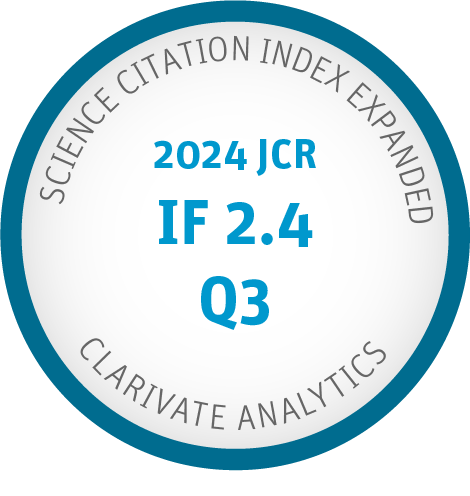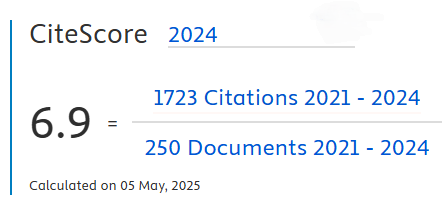Security Model For the Internet of Things, Through Blockchain
DOI:
https://doi.org/10.9781/ijimai.2025.02.009Keywords:
Blockchain, Business Intelligence, Cryptography, Immutability, Internet of things, Referencing, Safety, Smart IndustriesAbstract
Due to the proliferation of computer crimes related to information vulnerability handled by people and entities and evidenced in attacks of financial, commercial, personal and even family nature; a need has been identified to implement, security strategies and protocols in each and every one of these areas, which make possible the effective protection of the integrity and privacy of data. Regarding this, there are protection schemes such as cryptography and reliable time stamping which undoubtedly have managed to partially solve this problem by attacking structural and crucial points. However, the evolution in the technology field has been currently represented in the fourth industrial revolution and its context towards 4.0 technologies and smart industries; various technologies have been positioned in the emerging and disruptive categories, among which the Internet of Things (IoT) stands out. This technology has become the target of multiple computer attacks, due to the processes of Extraction, Transformation, Loading and Transmission of large volumes of data. Alongside its widespread connection to the Internet, it’s become a strategic target for such attacks. A possible alternative solution to this situation is blockchain, which allows information to be public and stored in different blocks, which makes it easier to guarantee the integrity of information based on the following aspects:
• Identification of the attacked and / or compromised information, which can be marked as invalid information.
• Public report of the attack.
• Information backup in another block to facilitate its recovery.
In this regard, it is important to highlight that these functional and technological characteristics offered by the blockchain, facilitate the management of information and its integrity. However, it is necessary and essential to previously guarantee the structure of the information generated; as some processes of Business Intelligence (BI), such as the Extraction, Transformation and Load scheme (ELT), would be of great relevance and support during the development of this procedure.
Downloads
References
Y. Zhang, “Technology Framework of the Internet of Things and Its Application,” in Electrical and Control Engineering (ICECE), [s.f.].
A. Botta, W. d. Alessio, “Integración de computación en la nube e Internet de las cosas: una encuesta,” Elsevier, vol. 56, Napoli, Italia, 2016.
F. Sánchez-Torres, I. González, and C. C. Dobrescu, “Machine Learning in Business Intelligence 4.0: Cost Control in a Destination Hotel,” 2022.
J. M. C. Lovelle, J. I. R. Molano, and C. E. M. Marin, “Introducción al Internet de las Cosas,” Redes de Ingeniería, vol. 6, 2015.
C. D. Retamal, J. B. Roig, and J. Tapia, “La blockchain: fundamentos, aplicaciones y relación con otras tecnologías disruptivas,” Economía industrial, vol. 405, pp. 33–40, 2017.
F. Colorado, “El ciclo PHVA de Deming y el proceso administrativo de Fayol,” Academia, 2009. [Online]. Available: http://www.academia.edu.
D. M. Llorián and J. M. C. Lovelle, “Socialización de Objetos Inteligentes aplicando Ingeniería Dirigida por Modelos en el marco de Internet de las Cosas,” Doctoral dissertation, Universidad de Oviedo, 2020.
J. R. Douceur, “The Sybil Attack,” in Peer-to-Peer Systems: First International Workshop, IPTPS 2002 Cambridge, MA, USA, March 7–8, 2002 Revised Papers 1, Springer Berlin Heidelberg, pp. 251–260, 2002.
N. Ekedebe and W. Y., “Securing transportation cyber-physical systems,” in Securing Cyber-Physical Systems, CRC Press, Boca Ratón, 2015.
R. Faludi, Building Wireless Sensor Networks: With ZigBee, XBee, Arduino, and Processing. O’Reilly Media, Inc., 2010.
M. Álvarez, J. J. Jiménez, M. González-Guerrero, C. Hernando, and H. Guerrero, “Total Ionizing Dose radiation test on the temperature sensor TMP36 from Analog Devices,” in 2012 IEEE Radiation Effects Data Workshop, July 2012, pp. 1–7.
A. González, Y. Díaz, and W. Flórez, “Design and prototyping of an electronic cane for an indoor guie system for the blind,” Ingeniería (0121- 750X), vol. 25, no. 3, 2020.
G. Zhang, X. Chen, L. Zhang, B. Feng, X. Guo, J. Liang, and Y. Zhang, “STAIBT: Secure and reliable agricultural IoT Blockchain Terminal empowered by Blockchain and CP-ABE,” International Journal of Interactive Multimedia and Artificial Intelligence, vol. 7, Special Issue on Multimedia Transmission and Processing in IoT with Edge Intelligence, 2022.
W. Ruíz-Martínez, Y. Díaz-Gutiérrez, R. Ferro-Escobar, and L. Pallares, “Application of the Internet of Things through a Network of Wireless Sensors in a Coffee Crop for Monitoring and Control its Environmental Variables,” TecnoLógicas, vol. 22, no. 46, pp. 101–116, 2019.
A. B. Martínez, E. A. G. Lista, and L. C. G. Flórez, “Técnicas de modelado de procesos de ETL: una revisión de alternativas y su aplicación en un proyecto de desarrollo de una solución de BI,” Scientia et technica, vol. 18, no. 1, pp. 185–191, 2013.
M. Casters, R. Bouman, and J. Van Dongen, Pentaho Kettle Solutions: Building Open Source ETL Solutions with Pentaho Data Integration. John Wiley & Sons, 2010.
H. E. Williams and D. Lane, Web Database Applications with PHP and MySQL: Building Effective Database-Driven Web Sites. O’Reilly Media, Inc., 2004.
D. Ipswich, Setting up a WAMP Server on Your Windows Desktop. Technology Now at Smashwords, 2011.
A. Arias Maestro, Ó. Sanjuán Martínez, A. M. Teredesai, and V. GarcíaDíaz, “Blockchain Based Cloud Management Architecture for Maximum Availability,” 2023.
Y. D. Gutiérrez and J. M. C. Lovelle, “Análisis de la función Hash Criptográfica en cadenas de bloques y su impacto en la seguridad de transacciones de datos,” Redes de Ingeniería, vol. 9, no. 2, pp. 82–87, 2018.
L. B. Carneiro, A. C. C. Silva, and L. H. Alencar, “Scrum agile project management methodology application for workflow management: a case study,” in 2018 IEEE International Conference on Industrial Engineering and Engineering Management (IEEM), Dec. 2018, pp. 938–942.
Downloads
Published
-
Abstract47
-
PDF20








